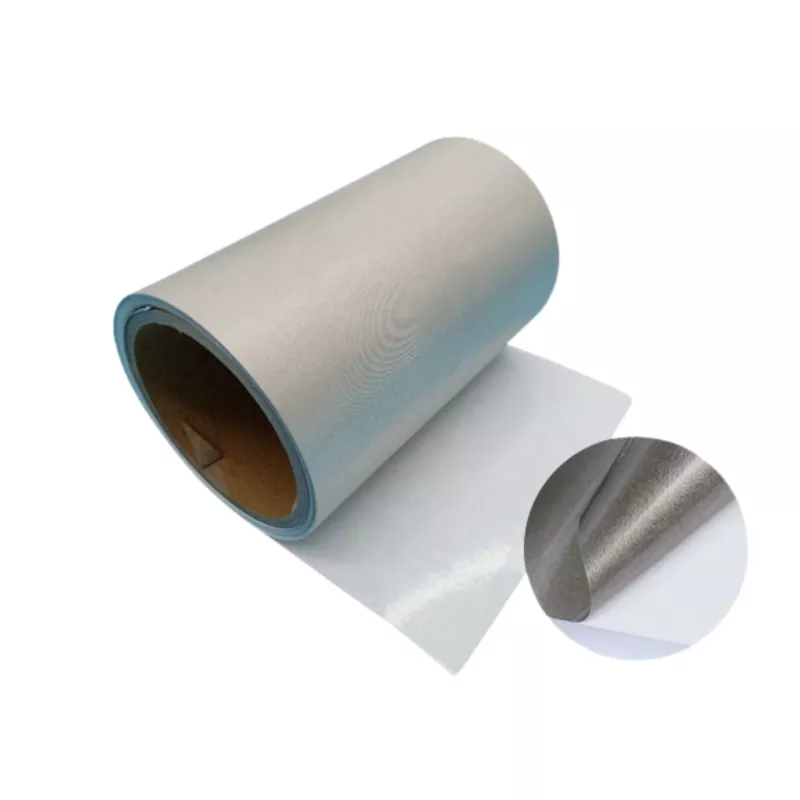
In industries where precision and reliability are non-negotiable—from aerospace to consumer electronics—equipment failure isn’t just inconvenient; it’s costly. One often-overlooked hero in the battle against downtime and inefficiency? conductive tape. This versatile material isn’t just “sticky metal”—it’s a performance-enhancing tool that tackles electromagnetic interference (EMI), static buildup, and thermal challenges. Here’s how conductive tape can elevate your equipment’s performance while cutting operational costs.
Conductive tape is engineered with metal-coated fibers (e.g., copper, aluminum) or carbon-infused adhesives, creating a low-resistance path for electricity. Unlike standard tapes, it:
Not all conductive tapes are equal. Prioritize these factors:
Conductivity Level:
High Conductivity (e.g., copper, silver): For EMI shielding or grounding (<0.1 Ω/sq).
Moderate Conductivity (e.g., carbon): For static dissipation (10³–10⁶ Ω/sq).
Adhesive Type:
Acrylic: Balanced stickiness and temperature resistance (-40°F to 300°F).
Silicone: Extreme heat tolerance (up to 500°F) for engines or industrial gear.
Flexibility:
Thin, pliable tapes conform to curved surfaces (e.g., cables, PCB traces).
Environmental Resistance:
Opt for UV-stable, waterproof tapes for outdoor or harsh environments.
Surface Prep: Clean with IPA (isopropyl alcohol) to remove oils/dust before application.
Overlap Seams: Ensure 25% overlap when wrapping cables or enclosures for full coverage.
Grounding: Always connect the tape to a verified ground point using clamps or solder.
Test & Validate: Use an ohmmeter to confirm conductivity post-installation.
Cost Savings: Avoid expensive redesigns—retrofit existing equipment.
Speed: No curing or specialized tools required. Peel, stick, and go.
Scalability: From prototyping to mass production, it adapts to any workflow.
Final Takeaway
In a world where equipment demands grow faster than budgets, conductive tape offers a simple, scalable fix for complex problems. Whether you’re silencing EMI, taming static, or managing heat, this unsung hero delivers outsized returns. Don’t wait for a failure to act—proactively tape your way to peak performance.
Problem: EMI from nearby devices corrupts sensor signals in IoT modules.
Solution: Apply copper foil tape to shield circuit boards, reducing noise by 20–30 dB.
Bonus: Replace traditional shielding cans to save space and weight.
Problem: Electric vehicle (EV) battery packs suffer from heat buildup and static risks.
Solution: Use aluminum-backed conductive tape to ground cells and improve thermal conductivity.
Bonus: Meet SAE J1646 standards for EMI suppression in high-voltage systems.
Problem: Avionics systems fail due to static discharge during flight.
Solution: Line equipment panels with conductive fabric tape to create Faraday cages.
Bonus: Comply with MIL-STD-461 for EMI control in mission-critical hardware.
Problem: MRI machines generate interference that disrupts nearby monitoring equipment.
Solution: Shield cables and connectors with nickel-coated conductive tape.
Bonus: Maintain FDA compliance for electromagnetic compatibility (EMC).
Problem: Smartphones overheat during fast charging, throttling performance.
Solution: Apply thermally conductive adhesive tape to dissipate heat from chips.
Bonus: Extend battery life and prevent thermal shutdowns.